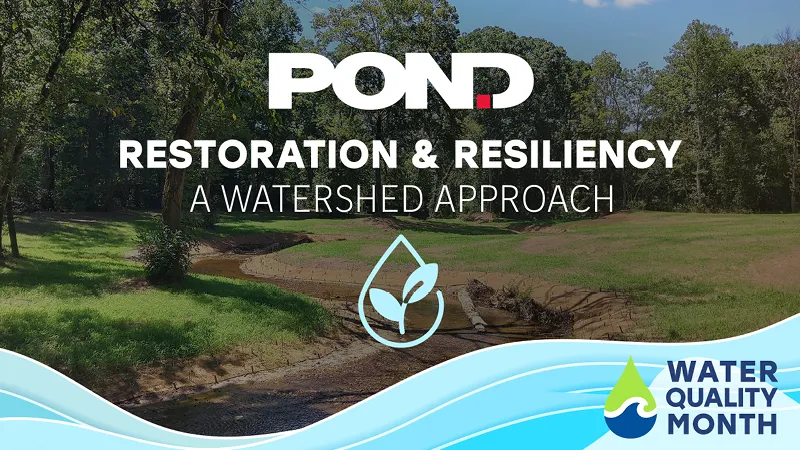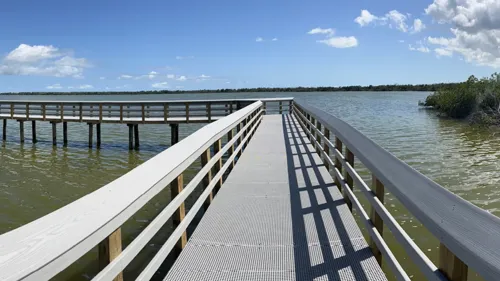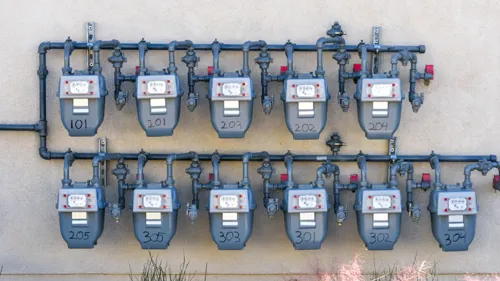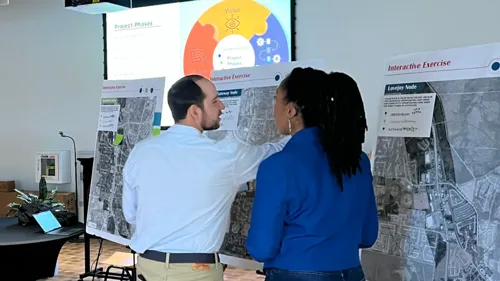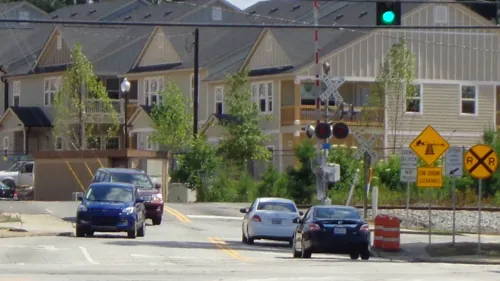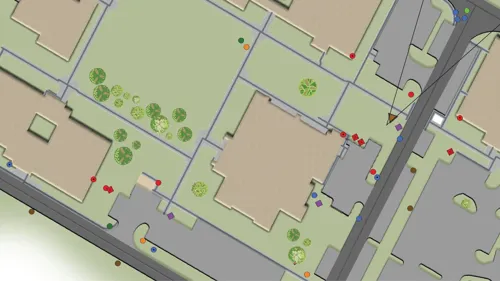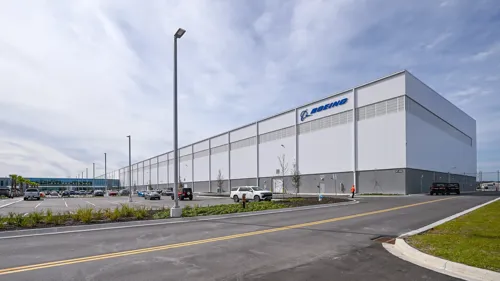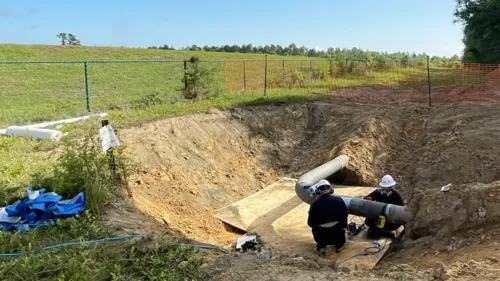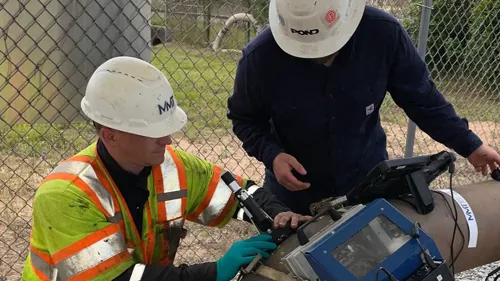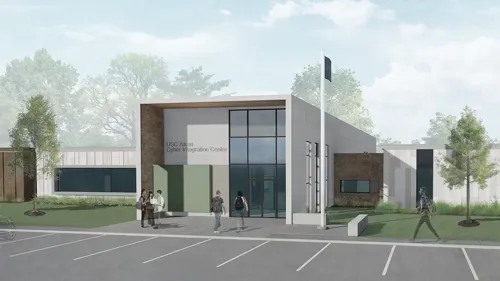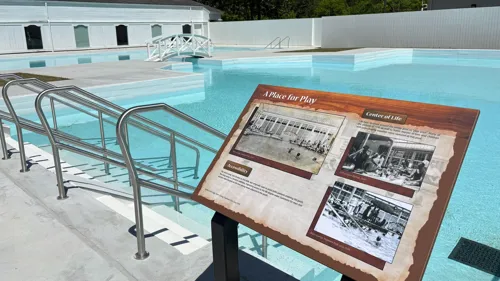Reactivating Mobility In & Around West Tampa
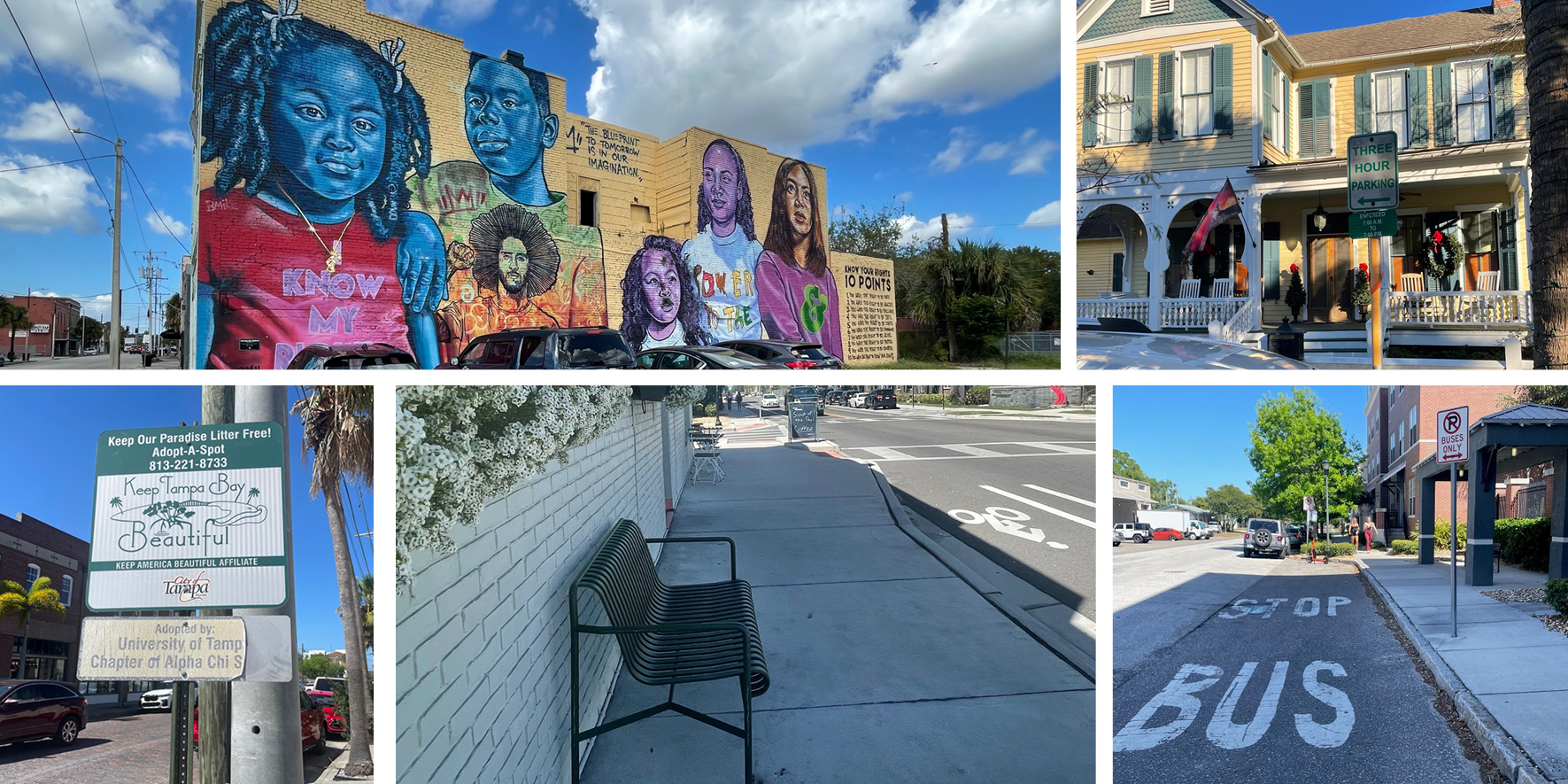
Introduction
In 2023, Pond conducted a comprehensive evaluation of the parking conditions in the West Tampa Community Redevelopment Area (CRA) to enhance the transportation landscape of West Tampa and pave the way for a smarter, more efficient parking system. The study went beyond assessing the current parking inventory, utilization, and overall effectiveness. It also delved into the managerial strategies involved in parking enforcement to ensure that the strategies employed would be effective in addressing the exact needs of residents, businesses, and visitors in West Tampa.
Background
Once populated by young men working in the cigar factories, West Tampa has historically been plagued by transportation issues since its founding in the late 19th century. Initial growth in the area was stunted when workers from the neighboring Ybor City refused to travel across the Hillsborough River into the “wilds” of West Tampa. The community has come a long way since then with established residential communities and historic commercial corridors. Recent growth and redevelopment have brought renewed investment to the area but have also contributed to new parking challenges.
To better understand the specific parking needs of West Tampa, a comprehensive parking study of the entire area was needed. The project study area sprawled across 832 acres between the Hillsborough River, Armenia Avenue, Columbus Drive, and Kennedy Boulevard. To accurately account for varied land use and parking issues, the study area was split into a north and south side, with I-275 providing a logical separation point. The north side of the study area consisted of mostly single-family residential housing and featured a large historic district with limited parking supply. South of I-275, the area included more commercial development, townhomes, and apartments. Multiple large redevelopment efforts were ongoing throughout the study area including River West, Rome Yards, Main Street Revitalization, and the Tampa Riverwalk Extension. Long-term street parking from students at the University of Tampa also presented a challenge.
Methods
To accurately account for the city’s needs, while remaining inclusive of mixed incomes and demographics, a variety of methods were employed to assess the community needs and to address them through projects and policies.
Public Outreach
Engaging with the community was crucial to understanding the specific needs within West Tampa. The community engagement piece involved gathering input on problem areas through an online survey platform where residents could drop pins on an interactive map. The community expressed a strong preference for alternative transportation options, indicating a willingness to walk for over four minutes from their parking spot. The distance to their destination was the primary factor influencing parking choices. Preferences varied based on age, with the senior population preferring closer parking spots. The community’s input highlighted the importance of enhancing alternative transportation options and ensuring conveniently located parking facilities.
Engaging with the community was crucial to understanding the specific needs within West Tampa.
Parking Inventory
Conducting a site visit is an important preliminary step when performing a parking study, as it provides valuable information about the specific location under consideration. Site visits allow data collection, understanding of local context, observing parking behavior, identifying and investigating problem areas, and validating data. Four site visits were conducted over the length of the study.
All public on- and off-street parking was observed in a field study to collect existing parking conditions and create a parking inventory. Parked cars were manually counted over a three-day period during the peak times of 11AM-1PM, 2PM-4PM, and 6PM-8PM. The field study confirmed a parking supply of 5,680 spaces within the observed study areas, including public parking lots, public spaces in parking decks, and on-street parking spaces. There are limited public surface parking lot options throughout the study area with only nine public lots offering an estimated 85 spaces. Approximately 465 spaces are available for local businesses and community facilities such as the post office and library. All other commercial and residential parking is private, noted with signage, and not counted in the inventory. On-street parking is the biggest supply of public parking in the West Tampa CRA and there are no metered or time-restricted spaces and no public parking garages in this area.
Parking Utilization
Parking utilization in the area is influenced by usage and activity demand, including designated spaces for people with disabilities. The current demand-to-supply ratio indicated that the approximate overall parking occupancy was at acceptable levels with sufficient parking spaces available during peak times. This suggests that there is still sufficient parking capacity during these busy periods in most areas. There are several specific hotspots in the north and south areas with high parking occupancy that would benefit from effective parking management strategies, including enforcement and curb management. These hot spots reflect the highest occupancy of periods examined at 70-100% occupancy. As redevelopment continues in the area, it is expected that the demand for parking supply will increase, making ongoing monitoring and data collection essential to optimize parking utilization.
Growth Scenarios
The project team generated three types of growth scenarios for low, moderate and high projected growth in the historic commercial corridors of the north and south study areas, where the addition of significant parking supply to support redevelopment is less feasible. For each scenario, the total building footprint in each redevelopment area was calculated and assumed 25-50% increase for low growth, 75% increase for moderate growth, and 150% increase for high growth. The projected parking demand was generated by assuming that there will only be a 75% need of the total parking demand. The project team also considered various factors that could influence the project’s development, including different land uses and transportation facilities in the study areas. These considerations were vital in shaping the overall vision for the project’s future growth and ensuring adequate parking infrastructure.
Recommendations
The report’s recommendations are based on four main concepts: operational management, parking demand reduction, park-once, and increased supply. These concepts are reinforced by various strategies and initiatives and must remain flexible and adaptable to the changing needs of the community.
Operational Management
Operational management plays a crucial role in parking by optimizing space utilization, ensuring compliance, managing traffic flow, generating revenue, promoting safety and sustainability, and fostering a culture of continuous improvement. It enables parking facilities to operate efficiently, meet user demands, and deliver a seamless parking experience. By efficiently enforcing parking regulations, implementing time restrictions and/or metered parking in some areas, and addressing parking-related issues, parking enforcement can optimize the utilization of the existing parking supply, creating more available spaces for residents, visitors, and businesses. This proactive approach helps to add to the parking supply without the need for significant infrastructure changes, making better use of the available space and contributing to a more accessible and efficient parking system.
Operational management plays a crucial role in parking by optimizing space utilization, ensuring compliance, managing traffic flow, generating revenue, promoting safety and sustainability, and fostering a culture of continuous improvement.
Parking Demand Reduction
Promoting alternative commuting options like cycling, public transport, or walking can effectively decrease the demand for parking. Two key parking demand reduction strategies for the West Tampa CRA include multimodal demand parking reduction and reducing parking minimum requirements. This transition away from single-occupancy vehicles not only supports environmental sustainability but also addresses parking challenges. By encouraging a shift in transportation habits, traffic flow can be redirected towards other modes of travel, reducing parking demand in both residential and commercial areas. As a result, embracing active modes like walking and bicycling, as well as utilizing transit and micro-mobility options, will ultimately lessen the need for parking in the region.
Park-Once Strategy
The park-once strategy promotes walkable parking with convenient demand-response options, effective wayfinding, and a safe and engaging pedestrian environment. The basic concept of park-once strategies involves providing designated parking facilities at key destinations or transportation hubs within a community. Instead of driving to multiple destinations and searching for parking each time, individuals are encouraged to park their vehicles once at a central location and then walk, cycle, or use other non-motorized transportation modes to access various nearby destinations. By encouraging visitors and residents to park in centralized locations, the need for multiple parking trips is reduced and commuters are naturally encouraged to explore on foot, bicycle, or other active transportation modes.
Increased Parking Supply
Reducing parking demand, incorporating efficient management and implementing park-once strategies will naturally open more parking spaces in the West Tampa CRA. As a result, residents and visitors gradually shift from relying on automobile travel to active modes of transportation (walking and bicycling), as well as transit and micro-mobility which reduces the need for parking in the area. With the application of parking demand reduction and park-once strategies, a plan for increasing parking supply in key areas of West Tampa was developed that includes additional supply along residential streets, implementation of parking meters to provide turnover and encourage better use of existing supply, and implementation of parking lots and parking decks to provide additional parking supply near redeveloping historic commercial corridors.
Reducing parking demand, incorporating efficient management and implementing park-once strategies will naturally open more parking spaces in the West Tampa CRA.
Phased Implementation Plan
The parking plan provides recommendations for a variety of strategies, projects, and policy recommendations to improve parking and provide supportive multimodal mobility options in the West Tampa CRA. These recommendations were grouped into phases to allow implementation over time as redevelopment occurs. These implementation phases are indicated below:
- Phase 1: Current conditions with redevelopment occurring (2023-2027)
- Phase 2: Redevelopment occurring in target areas (2028-2033)
- Phase 3: Major redevelopment occurring in target areas (2034 and beyond)
Conclusion
By implementing strategic operational management, reducing parking demand, encouraging park-once strategies, and augmenting parking supply, West Tampa can revitalize mobility and establish a more accessible and efficient parking infrastructure. This systematic approach underscores the necessity for adaptive planning to address the dynamic needs of the community while bolstering sustainability and improving transportation within West Tampa. Learn more about Pond’s comprehensive transportation services.




